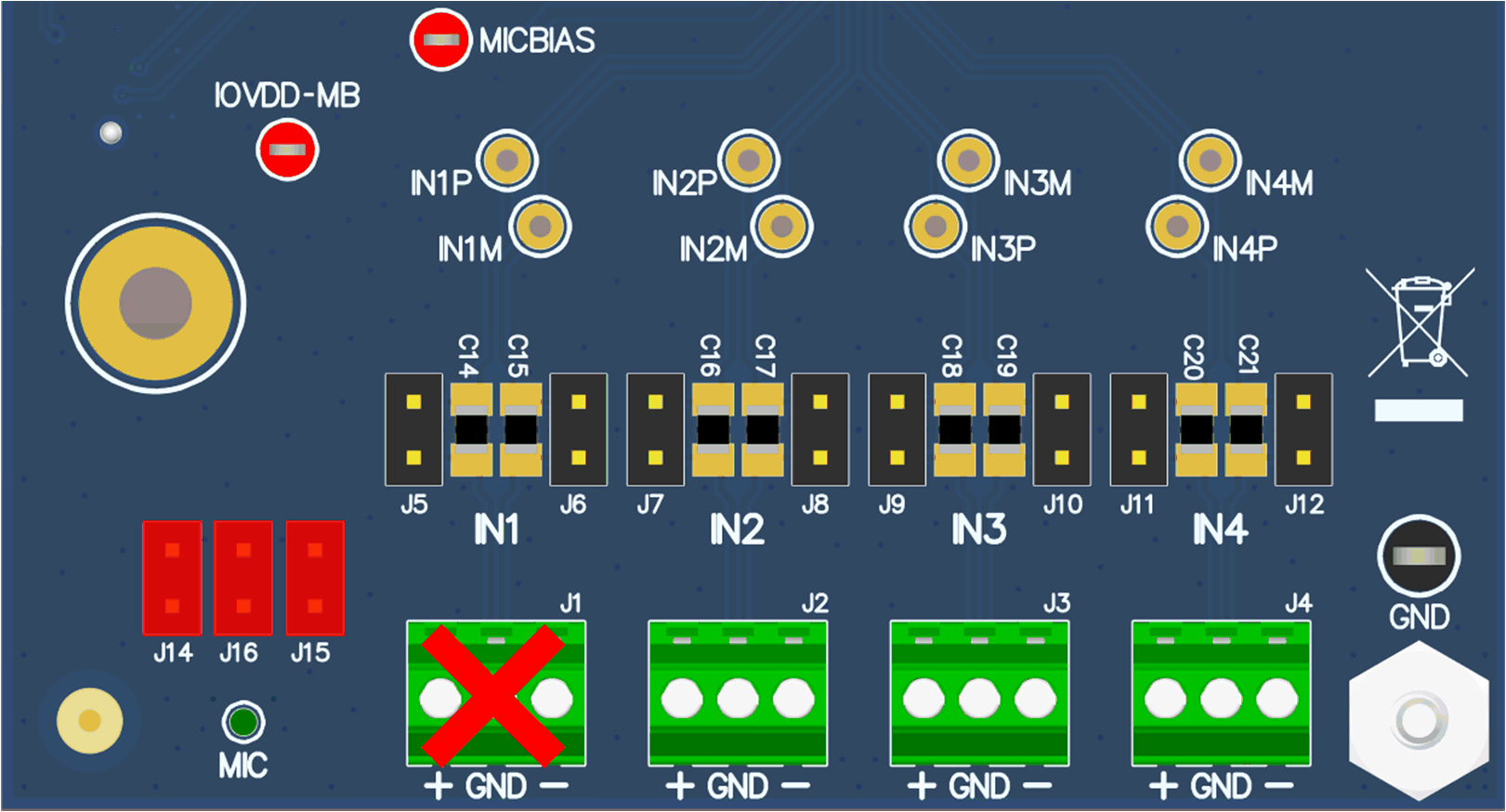SBAU443 November 2023
2.2.2.2 Onboard Microphone Input
For the onboard microphone input configuration (shown in Figure 3-10), the PCMx140Q1 records the audio captured from the microphones located on the bottom edge of the board. MICBIAS is used to power the onboard microphone, so header J14 must be shorted. There must not be any connections to J1 during onboard microphone use to preserve the performance of the microphone.
 Figure 2-10 PCMx140Q1EVM Connection for the Onboard Microphone Test
Figure 2-10 PCMx140Q1EVM Connection for the Onboard Microphone Test